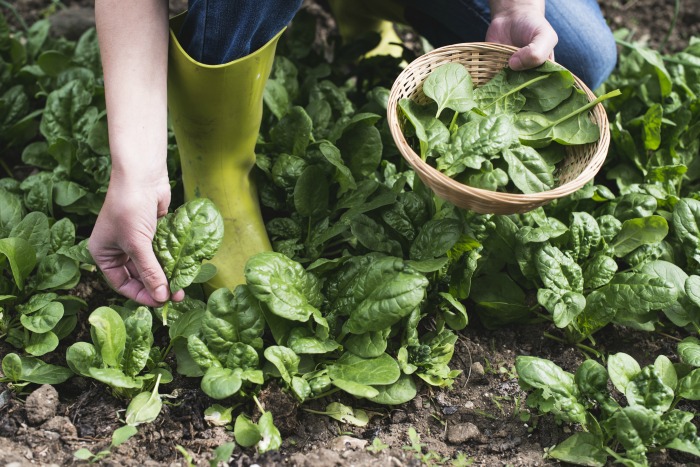How To Grow Spinach
Spinach is one of the first seeds you can plant for a spring harvest and a wonderful source of Vitamin A and one of the healthiest sources minerals and nutrients that we can grow. It is considered a superfood because of all the nutrition these little leaves are packed with.
Varieties, such as Bloomsdale Long Standing Spinach are cold-hardy, tender-leafed crop that is ideal for being planted in very early spring, as well as in fall and winter. Spinach is a fast-growing vegetable that is a great late fall or winter crop because it can survive a frost and temperatures down to 15ºF.
Common spinach problems such as bolting and pests like damping off and Downey mildew are sometimes caused by the way we grow the plant and environmental conditions. To remedy this, use natural compost or soil amendments in the soil, add mulch, and grow in cooler weather conditions.
Widget not in any sidebars
Similar to lettuce, spinach seeds germinate very quickly and can be started up to 10 weeks before the average last frost date in your area. In fact, it is such as easy vegetable variety to grow. It’s truly a plant-it-and-forget-it garden addition because beyond thinning, there is no additional cultivation or fertilizing necessary. As well, it can be grown in a brightly lit windowsill or in a container garden for easy access.
Starting Spinach From Seed (45 days to mature)
- If you are planting indoors, follow this indoor seed starting guide. If growing outdoors, select a site with full sun to light shade and well-drained soil.
- Sow seeds ½ inch to 1 inch deep, covering lightly with soil. Sow about 12 seeds per foot of row, or sprinkle over a wide row or bed.
Soil should not be warmer than 70º F in order for germination. - Spray containers with a fine mist spray bottle or lightly with a water nozzle to moisten the soil.
- Seeds should germinate in a few days. Once seedlings emerge, ensure they have access to part-sun or are in a sunny location.
- When seedlings sprout to about two inches, thin them to 3-4 inches apart.
- Plant more seeds every couple weeks during early spring for successive planting.
Harvesting Spinach Leaves
Once five or six good leaves have grown on the spinach plant, it’s time to start harvesting. For sweeter spinach leaves, pick them with the plants are young. When the spinach plant is mature and ready for harvest, some simply cut the entire plant at the base, but there are other methods that will allow for a longer harvest. Leaves can be picked either by cutting the leaves with scissors or picking the outer, older leaves first and then gradually working your way to the center of the plant as those leaves mature. Harvesting spinach by this method will often allow it to re-sprout and give you another partial harvest.
Spinach is an easy and highly nutritious leafy green to add to the garden this year. For those who are just starting out growing vegetables, this one is a great choice!
FREE Compact Garden Blueprint (Ad)
Happy Gardening!
Tess Pennington is the author of The Prepper’s Blueprint, a comprehensive guide that uses real-life scenarios to help you prepare for any disaster. Because a crisis rarely stops with a triggering event the aftermath can spiral, having the capacity to cripple our normal ways of life. The well-rounded, multi-layered approach outlined in the Blueprint helps you make sense of a wide array of preparedness concepts through easily digestible action items and supply lists.
Tess is also the author of the highly rated Prepper’s Cookbook, which helps you to create a plan for stocking, organizing and maintaining a proper emergency food supply and includes over 300 recipes for nutritious, delicious, life-saving meals.
Visit her web site at ReadyNutrition.com for an extensive compilation of free information on preparedness, homesteading, and healthy living.
This information has been made available by Ready Nutrition



